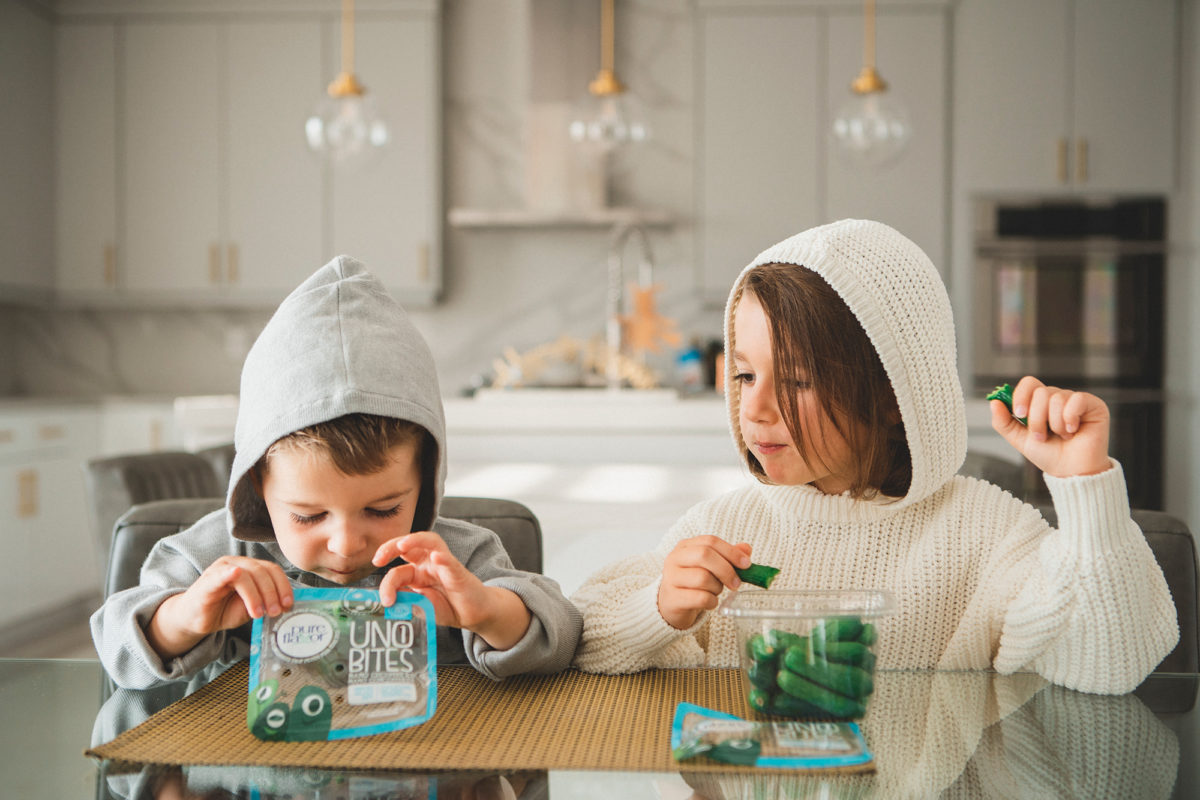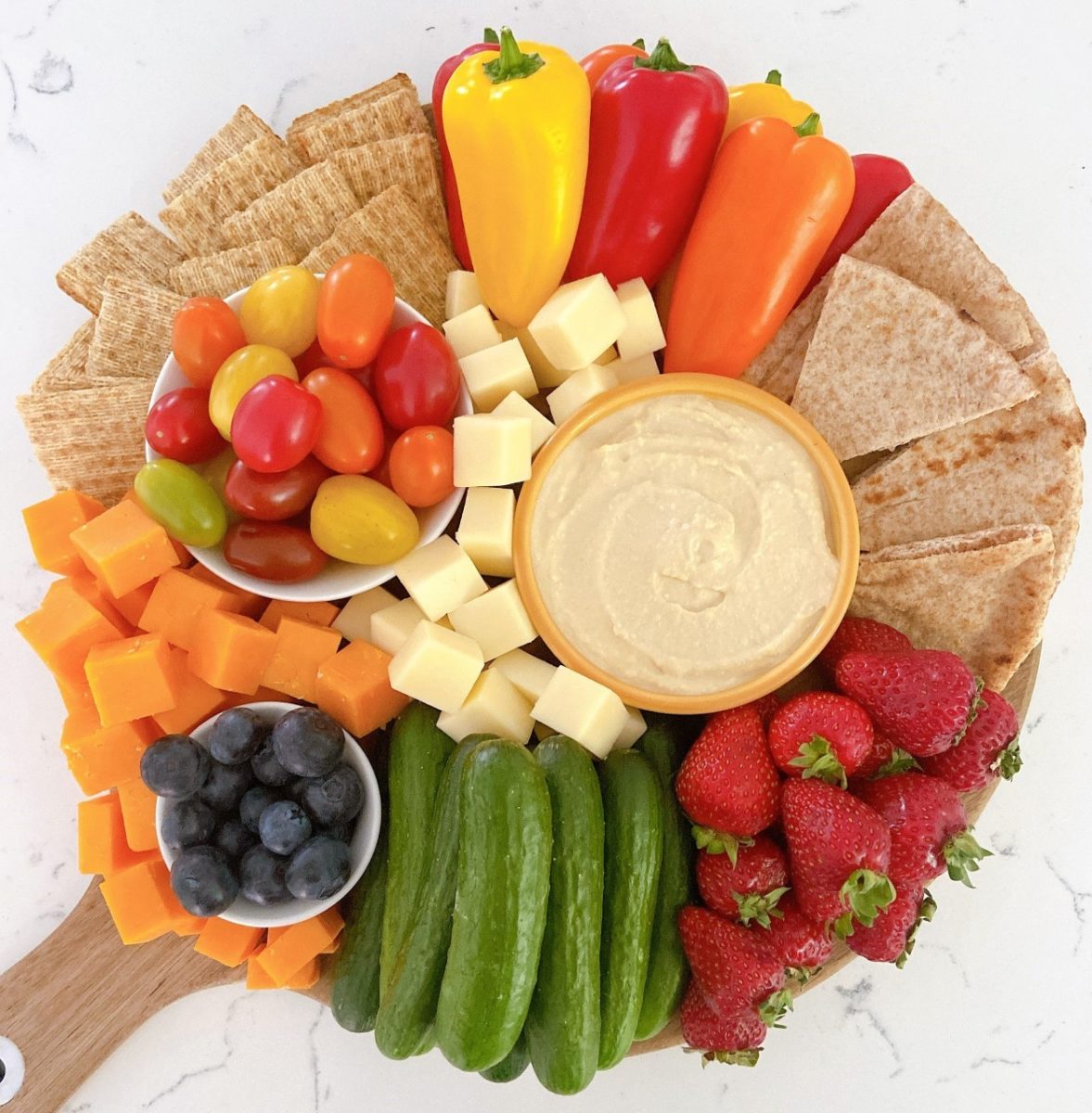Mealtime can often be a struggle for parents. Kids don’t come with a manual on how to feed them or get them to eat their veggies. Some children are born with an adventurous spirit when it comes to food, while others seem to have a limited scope of foods they like. Registered Dietitian, Christina Iaboni, shares with us how to help make mealtime a more pleasant experience.

Many of us were raised to clean our plates. We were told to finish our meal before we were allowed to have dessert. Or perhaps there were negotiations: “eat at least two bites of cauliflower and three bites of meat before leaving the table.” These comments and behaviors lead children to become out of tune with their natural hunger and fullness cues in order to get something they want (dessert, tv etc.) or to please a parent or caregiver.
How can parents navigate these situations to make mealtimes more pleasant for everyone?
The Division of Responsibility is a feeding theory developed by registered dietitian Ellyn Satter. This theory acknowledges children’s natural hunger and food regulating capabilities and gives parents the responsibility to create a supportive eating environment. There is no force feeding, negotiating or coercion tactics. It can be used for children of all ages – from infants to teenagers. The goal is to create eating competence, which means being positive, comfortable, and flexible with eating, as well as being matter of fact and reliable about getting enough enjoyable food to eat.
Children have great appetites; they want to eat and have a natural ability to do so. However, even with a great appetite, children may refuse foods or be particular about textures and flavors. Due to their age, their palates are not as developed as adults, and it can take many exposures of certain foods for a child to accept a new one. If parents create a supportive eating environment, children will eat as much as they need, will gradually accept new foods, and grow in their own unique way.

How does the Division of Responsibility work?
Our job as parents is to decide what food is served, when and where. We choose and prepare the food, provide regular meals and sit-down snacks, plus do our best to eat meals as a family.
The job of the child is to decide whether to eat and how much. Yes, this requires trust on the parent’s part to allow their child to eat what their body needs.
How do snacks work?
Snacks should be thought of small meals for young children and not just treats. Children, especially toddlers and preschoolers, have small stomachs and need to eat every 3 to 4 hours. At snack time, include two to three foods which consist of some protein, carbohydrates, and fat. For example: Pure Flavor® Poco Bites® Cocktail Cucumbers, cubed cheese, and whole grain crackers; Pure Flavor® Aurora Bites Mini Sweet Peppers, hummus, and whole wheat pita; or Pure Flavor® Sangria® Medley Tomatoes, mozzarella cheese and blueberries. Offering vegetables as snacks, as well as at mealtime, provides more opportunities for exposure. Vegetables provide antioxidants, vitamins, minerals, and fiber that growing children need. Aurora Bites Mini Sweet Peppers, for example, are high in Vitamin C, an antioxidant that helps protect our cells against damage, while Juno Bites® Red Grape Tomatoes contain potassium, a mineral important for heart health.
Time snacks so that there is a long enough period of time before the next meal (1 to 2 hours) to allow the child to get hungry again. In between snacks, only offer water. If your child comes to you in 10 minutes after a meal and says “I’m hungry,” simply reply saying “It isn’t snack time right now, but we have a snack at…” If your child is used to nibbling or grazing throughout the day, this can be a big change, but in time they will get used to it and learn to eat what they need at feeding times.
Other components of the Division of Responsibility:
- Be considerate to your child’s lack of food experience, but do not cater. This means the entire family eats the same meal. You can create a child version that might look a little different than an adult version. For example: if you make spicy chicken and your children are not used to spices, keep some chicken aside and prepare it simply. At dinner, offer them both types to try. It can take many exposures to foods before acceptance.

- Exposure doesn’t mean tasting. Remember, there is no force feeding or negotiating with this tactic. It can just mean putting it on the table or plate. For example, my daughter never eats sweet peppers or zucchini, but every time I prepare it, I put a small portion on her plate. When she says, “I don’t like this” I simple respond saying, “You don’t have to eat it.”
- Always include some familiar foods that you know your child will eat so that at a meal or snack, they will have an option they like. This is especially important when you are introducing new foods. For example, if you are serving salmon, rice, and salad, make sure your child is familiar with and enjoys at least one of those foods. In my house, I know my daughter will usually eat some plain rice and salad, but salmon is hit-or-miss.
- What about junk food? Remember, all foods fit within a healthy diet. When foods are forbidden, children just want them more. All foods should be equal. Call foods by their names (chocolate, chips, etc.) as opposed to using the word treat. These foods are a part of life and are meant to be enjoyed. When kids are young, we can control their eating, but as they get older and eat independently, we want them to be able to enjoy all foods and learn to eat less nutritious ones in sensible quantities. I typically provide a less nutritious food at lunch. It could be a few chocolate candies, a cookie or a handful of chips. It can be eaten at any point in the meal.
Raising a competent eater can take time, but the Division of Responsibility feeding method benefits both kids and parents. It takes the pressure off meals for everyone and allows children to listen to their bodies and be in tune with their hunger and fullness signals. Do your best to eat meals together as a family and prepare food you enjoy – in time, your children will enjoy all the same foods you do.
For tasty recipes, plus more tips and tricks, make sure to sign up for Pure Flavor®’s monthly newsletter.



